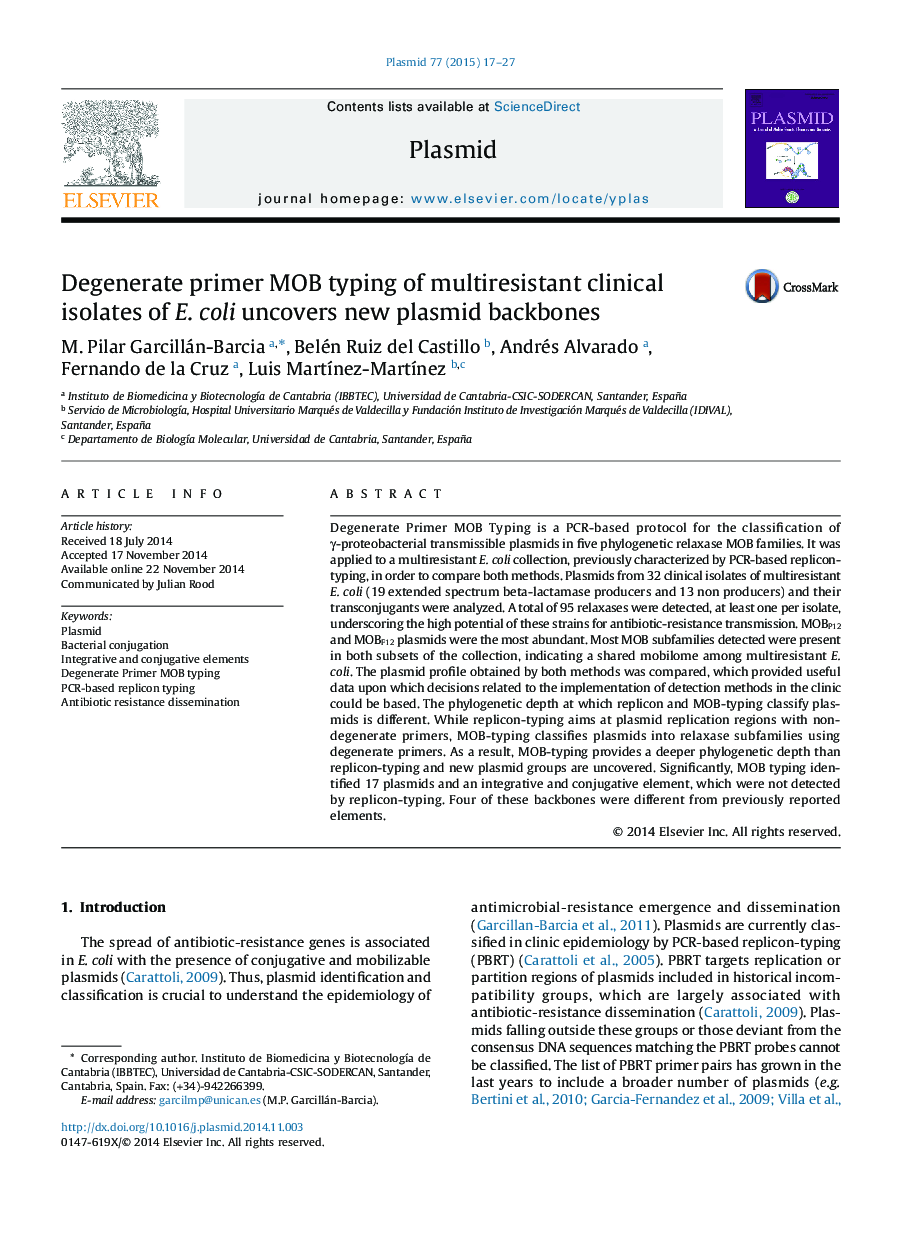| Article ID | Journal | Published Year | Pages | File Type |
|---|---|---|---|---|
| 2824070 | Plasmid | 2015 | 11 Pages |
•Two plasmid identification methods (Degenerate Primer MOB Typing and PCR-Based Replicon Typing) are compared.•A Bio-Plex bead array is set up for plasmid identification.•The diversity of relaxase MOB families present in a multiresistant E. coli collection of clinical isolates is studied.•New plasmid backbones are detected and classified by Degenerate Primer MOB Typing.
Degenerate Primer MOB Typing is a PCR-based protocol for the classification of γ-proteobacterial transmissible plasmids in five phylogenetic relaxase MOB families. It was applied to a multiresistant E. coli collection, previously characterized by PCR-based replicon-typing, in order to compare both methods. Plasmids from 32 clinical isolates of multiresistant E. coli (19 extended spectrum beta-lactamase producers and 13 non producers) and their transconjugants were analyzed. A total of 95 relaxases were detected, at least one per isolate, underscoring the high potential of these strains for antibiotic-resistance transmission. MOBP12 and MOBF12 plasmids were the most abundant. Most MOB subfamilies detected were present in both subsets of the collection, indicating a shared mobilome among multiresistant E. coli. The plasmid profile obtained by both methods was compared, which provided useful data upon which decisions related to the implementation of detection methods in the clinic could be based. The phylogenetic depth at which replicon and MOB-typing classify plasmids is different. While replicon-typing aims at plasmid replication regions with non-degenerate primers, MOB-typing classifies plasmids into relaxase subfamilies using degenerate primers. As a result, MOB-typing provides a deeper phylogenetic depth than replicon-typing and new plasmid groups are uncovered. Significantly, MOB typing identified 17 plasmids and an integrative and conjugative element, which were not detected by replicon-typing. Four of these backbones were different from previously reported elements.
